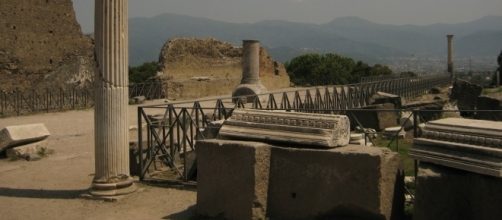Many large cities are sitting on top of geologic disasters just waiting to happen for example, in the U.S. from Seattle to Los Angeles people are sitting on major earthquake faults. However; nothing that an earthquake in L.A. or a giant Cascadia tsunami could do to the local or regional location compares in any way to the international threat posed by the Campi Flegrei caldera sitting beneath the Italian City of Naples with its millions of residents. Campi Flegrei translates as burning fields - an apt description of a volcano.
Volcano vs earthquake
While an earthquake on the San Andreas fault would devastate lower California, and place an enormous economic burden on the U.S. economy, it would essentially be only a local and regional event. An earthquake wouldn’t bury the mid-West corn and wheat belt under a foot or more of ash the way an eruption of the Yellowstone volcanic caldera (similar to the one underlying Naples) would. Nor is the upcoming San Andreas Fault quake (known almost affectionately by locals as "the big one," even likely to cause a major tsunami because of the nature of the fault. Although it would be a major Disaster, unlike the eruption of a super volcano, it would essentially be a localized disaster.
What’s up with The Burning Fields?
The December 22 issue of the British scientific journal “Nature Communications” reports the magma chamber under Naples is rising and may be nearing what is referred to as the Critical Degassing Pressure point where hot magma hits already superheated water and drives a disastrous steam explosion followed by a major volcanic eruption by one of the largest volcanoes on Earth.
Volcanologists fear that the conditions they are seeing indicate that that the urban volcano Campi Flegrei may be about to erupt adjacent to one of the most densely populated places on the planet, killing millions almost instantly, while spreading destruction far and wide, perhaps world-wide.
Not only would the eruption and subsequent collapse of the Campi Flegrei caldera (a caldera is literally a cauldron of liquid rock or magma) destroy Naples and the surrounding territory it could also trigger a gigantic Mediterranean tsunami as well as belching vast quantities of volcanic ash and possibly poisonous gasses into the heart of Europe as well as destroying fishing grounds.
Campi Flegrei’s history
Despite the fact that there hasn’t been a major eruption in the local area since the deaths of Pompeii and Herculaneum, that doesn’t mean it can’t or won’t happen again, perhaps tomorrow, or next month (but also possibly not until the next millennium).
When formed nearly 200,000 years ago, the initial Campi Flegrei eruption triggered a “volcanic” winter because it’s ash cloud circled the globe and blocked sunlight for years.
There were also major eruptions about 40,000 years ago and again 12,000 years ago, one which is now thought to have contributed to the extinction of the Neanderthals because of the rapid climate change it triggered.
It’s important to remember that gigantic calderas underlying old volcanos are not likely to just produce relatively small volcanic eruptions such as Mt. St. Helens which only killed fewer than 60 people (who had been warned) and destroyed 200 homes. The pool of magma under Napes is more than 7 miles across and includes two dozen earlier volcanos any or all of which could waken.
These days air travel is also disrupted by many volcanic eruptions not only because of the local danger but because the volcanic ash which spreads so widely is highly corrosive and abrasive.
Flying a jet through such a particle cloud will cause engine damage and potentially complete engine failure.
Campi Flegrei has continued to have minor eruptions over the years, the last important one was 500 years ago, so even if you don’t see volcanic steam and smoke coming up through the yards and fields in surrounding Napoli that doesn’t mean it is extinct. This volcano is just resting.

